Policies underpin the growth of biofuel demand, creating, expanding and sometimes shrinking U.S. ethanol export volumes.
By Lisa Gibson
In an ideal world, ethanol would be traded and blended without policies in place for encouragement, says Cary Sifferath, vice president of the U.S. Grains Council. In some countries, it might occasionally pencil out as a cheap oxygenate for gasoline, but blending policies are crucial to ensuring longer-term markets for U.S. ethanol, he says.
“Those policies pave the way. How much do I want to get involved in some of these short-term market plays versus long-term steady demand?”
U.S. ethanol exports have benefited from policies and blending goals around the globe where it meets carbon-reduction mandates. In the 2023-’24 marketing year, the industry exported a record 1.75 billion gallons, not including another 140.5 million of ethanol-based ethyl tert-butyl ether (ETBE) to Japan, according to the U.S. Grains Council.
Where U.S. ethanol does meet carbon mandates, the industry has a preferred barrel in the market and no better success stories exist currently than Canada, the European Union and Colombia, according to Hagan Rose, director of international sales and marketing for Eco-Energy and USGC’s ethanol advisory team leader. “In that order, but all three are remarkable success stories in the last 3 or 4 years,” he says. “Those markets are not only leading today but also have opportunities for continued growth.”
Growth Up North
“We’ve seen remarkable growth over the last three years as Canada sets out to meet its Paris Climate Accord Agreement goals,” Rose says.
In 2019, the U.S. exported about 340 million gallons to Canada, a steady figure since 2017. Rose says he’s anticipating this year’s exports north to hit 667 million gallons. “So, a pretty remarkable increase in only a few years in a market that had a 5% blend rate, now going to this level.
“I think we can all look at that as a success, for the U.S. market from an export standpoint, certainly, but a success for the blending in Canada,” Rose adds.
Canada’s Clean Fuel Regulations set a goal of a 15% reduction in carbon intensity (from a 2016 baseline) by 2030. Ron Lamberty, chief marketing officer for the American Coalition for Ethanol, says Canada’s proximity is a benefit for U.S. ethanol exports, but so are its mandates. “They enacted a nondenominational climate policy. You can reduce carbon intensity, and it doesn’t matter if you do it with electricity, by refining differently. They’ve done it the way we always want to see people do it.”
Canada’s federal CFR outlines a 5% blending mandate, but individual provinces are also enacting their own blending levels, some looking toward 15%. “On a provincial level, Quebec (10%, increasing to 15% by 2030), Ontario (10%), British Columbia (5%), Alberta (5%) all have their own carbon requirements,” Rose says. “So, in the past three years, we’ve seen a ramp-up and, frankly, it's been driven by both these factors.” Manitoba also has a 10% blending requirement.
“There is encouragement for them to increase,” Sifferath says of blending levels in Canadian provinces. “We’ve seen provinces go from 5.5% to 10% and we see some moving in the direction of 15%. … And we were able to get Canada to have an aggregate score for U.S. ethanol so that all U.S. ethanol can meet requirements for clean fuels in Canada, rather than having to pinpoint that on a plant-by-plant or even farm-by-farm basis.”
Lamberty says in discussions with Canadian retailers and oil companies in 2023, the tone was matter of fact, without the intense politics that have plagued domestic U.S. ethanol blending. “They are looking at it as a supply thing and opportunity. They had some questions and wanted to confirm some things, but they weren't really afraid of it. They just seem to be very realistic on what it could do – we can reduce carbon emissions by this much if we use this much more of that.
“When I got back from that trip, I said, ‘They’ll be at E15 nationwide before we are.’”
‘Remarkable Ramp-up’
Colombia, while not as large of a market as Canada and the EU, has also seen a “remarkable ramp-up” of ethanol imports from the U.S., Rose says. In 2019, Colombia received 33 million gallons of U.S. ethanol, but this year, Rose expects a nearly four-fold increase, to 120 million gallons. “For a market that does have a trade barrier in place, we’re still seeing our barrels moving.” Colombia has a countervailing duty on U.S. fuel ethanol.
But this year, Colombia also restored its 10% blending target, which had dipped to 8%.
In the EU, the countervailing duty of 2016-2017 has expired and U.S. ethanol imports have grown from 104 million gallons to 345 million gallons in 2024, Rose says. “Our market has become more comfortable with Renewable Energy Directive 1 and Renewable Energy Directive 2 programs. We’ve become more adept at (International Sustainability & Carbon Certification) Europe registration and we’ve seen that market grow.”
The EU has a goal of 10% renewables in transport. Stringent ISCC regulations precluded U.S. ethanol from fulfilling the EU’s full demand in 2023, but Rose says that’s changing. “I believe now we can satisfy the roughly 520-million-gallon import demand for Europe going forward.
“Again, remarkable growth with a very stringent carbon policy,” Rose says. “Trade barriers were removed so we’re on an equal footing with anyone except for a duty-free option to Europe.
Our ability to meet their carbon criteria has allowed us to grow in this market.”
Emerging Markets
Beyond the big three Rose identifies, he says he sees promise in Japan, Central America and India, though not all for fuel ethanol. Japan takes a significant amount of ethanol-based ETBE and India uses U.S. ethanol as a chemical feedstock. One of the best years on record, the U.S. is on track to send 187 million gallons of ethanol this year, Rose says, but the country uses only domestic ethanol for its transportation fuel.
“Policy is changing rapidly in India,” he says. “Promotion of grains for ethanol production is a new development in India, and the ethanol production industry is growing rapidly so there’s new production, new feedstocks.”
Both Lamberty and Rose say supporting increased fuel ethanol blending in India is still important for the U.S. ethanol industry, as “the rising tide lifts all boats.”
“When they’re looking realistically at the product and what it can do, that’s always going to be good for us,” Lamberty adds.
There is also talk of direct blending of ethanol in Japan. The regulations likely would follow the ISCC PLUS carbon program, and USGC anticipates movement on that front in the next two years or so, Rose says.
In Central America, Costa Rica, Guatemala and Panama are anticipated to begin blending in 2026 with carbon programs similar to Europe’s, Rose says.
Sifferath pinpoints Philippines as a top 10 market, with its domestic E10 mandate and voluntary blend up to E20. Indonesia and Vietnam also are starting to blend at lower levels, at 3% and 5% respectively. “These are two large and growing gas markets where there is potential for policy changes going forward that can open up those markets in the coming year or two,” he says.
Sifferath also mentions Nigeria, with its voluntary E10 blend. “We've had three different delegations go to Nigeria in the last year and that will continue to be a big focus for us in the next year.”
Scandinavian countries hold promise as well, but barriers for grain-based fuels block opportunities. “Those countries are very much in favor of renewable fuels and reducing carbon but it’s part of the front as we battle with Europe on how much grain-based ethanol can meet their growing fuel grade or on-road ethanol demand,” Sifferath says. “They do have a cap on how much can be grain based.”
Lamberty, Sifferath and Rose all agree that there is anticipation around Mexico’s new president, Claudia Sheinbaum, with hope her administration might be friendlier toward ethanol than past administrations. Sheinbaum has expressed favor toward renewable fuels in the past, as the mayor of Mexico City.
Rose says opportunities exist globally, not just in traditional fuel markets, but in chemicals, clean cooking and sustainable aviation fuel. “At Eco-Energy, we continue to focus on new uses, new avenues for use, new purposes and markets for ethanol.”
“The beauty of ethanol in most markets is once you get it in there, expanding it is much easier than getting it there in the first place,” Lamberty says. “The challenge is explaining the math and why it’s a good idea.
“But once you’ve got a foothold in that marketplace, you know how to ship it there,” Lamberty adds.
Author: Lisa Gibson
lisa.gibson@sageandstonestrategies.com





